What Works Best and When to Use?
Watching babies move from crawling to walking is an amazing thing, and can happen faster than we realize!
But not many parents have a specific idea of how shoes fit into the equation, often asking: “When should my baby start wearing shoes?” and “What types of shoes are best for kids?”.
A large part of the problems is that there are varying opinions across studies & other countries – however, some general rules can be applied to most babies, toddlers & children as they begin their walking journeys.
In this series we will cover 4 main topics:
- When should children start wearing shoes?
- What is the best shoe type for my child to use?
- Picking the right size, and how often to replace?
- Recommended shoe brands for different ages
When should children start wearing shoes?
There is no exact month or year at which all babies will need to start wearing shoes. The main time you are waiting for is when a baby starts to walk on their own outdoors (or on hard surfaces / areas where dangerous things might be stepped on).
Prior to actually walking, shoes for babies tend to be more fashion accessories than necessary protection for the feet (perhaps providing a bit of extra warmth & sock security!).
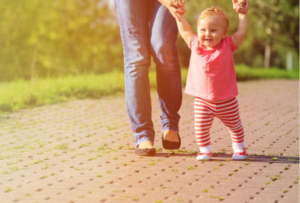
As most babies will start to walk between 10-24 months old, this can provide a general guide as to what age shoes will become necessary protection for their feet as they waddle around exploring.
How much time should children be barefoot?
Most modern research around babies (and indeed adult) feet shows us that walking barefoot is the best way to develop/strengthen the small muscles & other structures in the feet, and to build & maintain good balance and coordination.
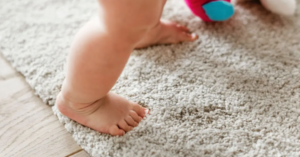
Our feet weren’t designed to walk around with boxes made of leather, plastics & fabrics strapped around them, so the more time spent barefoot during these early years – the better chance of preventing foot problems in the future.
What is the best shoe type for my child to use?
The best shoe for your child will depend on: their age & stage of development, and foot posture. For children with specific podiatrist or developmental issues: assessment & advice from a health professional (podiatrist, paediatrician or P&O) may be necessary.
Outside of this, some general guidelines can be followed:
- Up to age 6-7 (approximately) = very soft, flexible footwear to assist continued foot development. The feet tend to reach their “long-term” shape by about this age.
- Above 6-7 (approximately) = more ‘adult-style’ shoes, with solid fixation (eg. laces, triple velcro straps) and a firm base & heel cup.
Picking the right size & How often to replace?
As a general rule shoes used by active kids may need replacing every 8-12 months.
That said, the main questions for preschool age are:
- Have they worn out the tread-pattern by 1/3rd? (the ‘tyre-mark’-like pattern underneath the shoes rubber outsole),
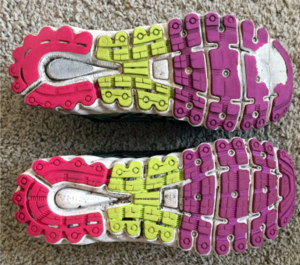
- Are the shoes damaged? (eg. holes near the toes or ankles),
- Does the shoe still fit well? (ie. have they outgrown the size).
The best way to test a shoe for anyone is to make sure:
- The toes sit 1-fingers-width spaced from the edge of the shoe/toe-box,
- You can ‘just’ slip your finger behind the heel with some minor effort.
**NOTE: Index finger for adult, little finger for toddler & young children – and this is just a general guide based on common foot sizes at certain ages**
Recommended shoe brands for different ages?
While there are too many child-friendly shoes-brands & designs to count, these are some of our common recommendations:
- Babies = anything soft
> Shoes will be mainly for looks & keeping the feet warm, so as long as it covers the feet & the material isn’t aggravating – most brands will suffice.
- Toddlers = Bobux
> They have a wide range of developmental-friendly footwear for all ages – birth to adolescents.
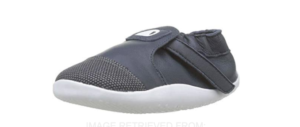
- Children (Primary School & onwards):
for School shoes: Ascent, Clarks
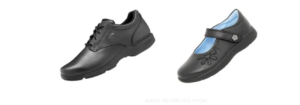
- for Runners: Asics, Brooks, NB, Mizuno’s
Casual-wear: fashion brands (Nike, Converse etc) are generally tolerated for short-use, but be careful when it comes to long days out on the feet.

